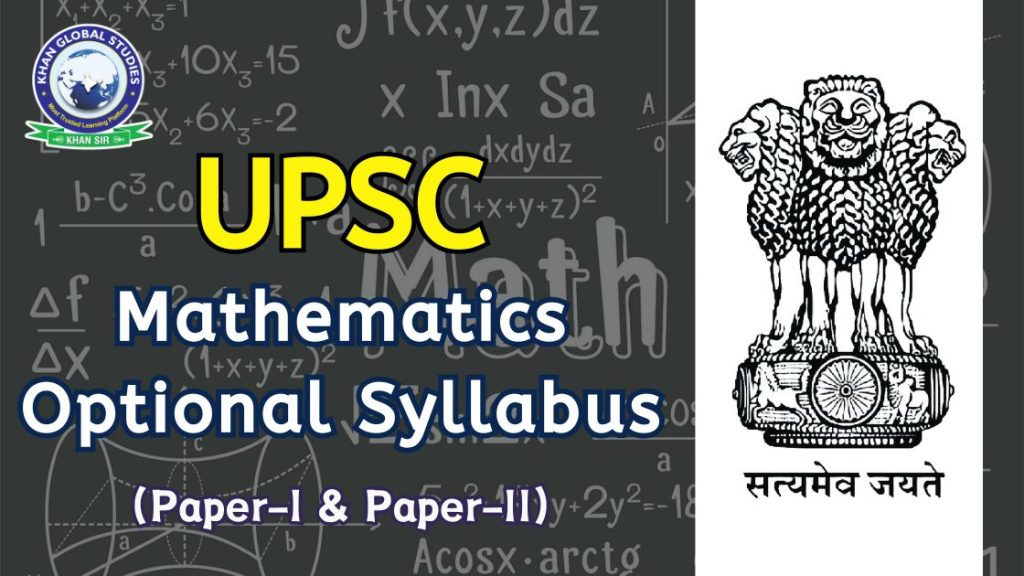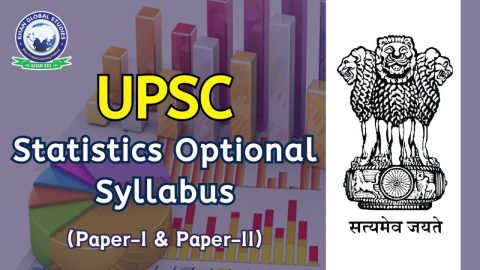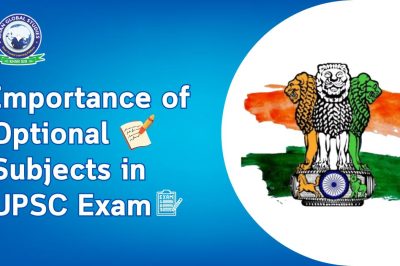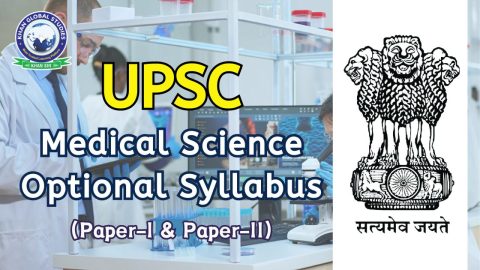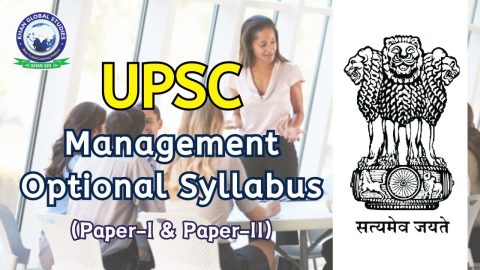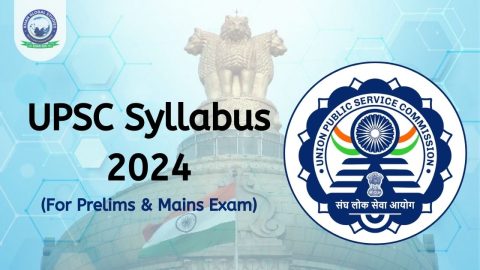The UPSC optional syllabus of Mathematics consists of two papers, Paper I and Paper II, each carrying a weightage of 250 marks. Both the papers are divided into different sections, and candidates have to choose one subject from each section. Let us look into the details of each paper.
UPSC Mathematics Optional Syllabus
Mathematics as an optional subject has the highest scoring potential in UPSC CSE, provided you have done your preparation adequately and can write your answers accurately. This subject is less unpredictable than humanities subjects because of its objective and almost consistent method of research and problem-solving. This makes it a good choice for engineers, candidates with a science background or mathematics graduates who already have a technical mindset.
| UPSC Maths Syllabus | Topics |
| Paper I | Linear Algebra Calculus Analytic Geometry Ordinary Differential Equations Dynamics and Statics Vector Analysis |
| Paper II | Algebra Real Analysis Complex Analysis Linear Programming Partial Differential Equations Numerical Analysis and Computer Programming Mechanics and Fluid Dynamics |
UPSC Mathematics Optional Syllabus for Paper I
Linear Algebra
Vector spaces on R and C, linear dependence and independence, subspaces, basis, dimension, linear transformation, rank and nullity, matrix of a linear transformation. Algebra of matrices; Row and column reduction, echelon form, unity and equality; Rank of matrix; matrix inverse; Solution of systems of linear equations; Eigenvalues and eigenvectors, characteristic polynomials, Cayley-Hamilton theorem, symmetric, skew-symmetric, Hermitian, skew-Hermitian, orthogonal and unitary matrices and their eigenvalues.
Calculus
Real numbers, functions of real variables, limits, continuity, variation, mean-value theorem, Taylor’s theorem with remainder, indefinite forms, maximum and minimum, asymptotes; curve tracing; Functions of two or three variables; Limits, continuity, partial derivatives, maxima and minima, Lagrange’s multiplier method, Jacobian. Riemann’s definition of definite integrals; indefinite integrals; infinite and unreasonable integrals; Double and Triple Integrals (Evaluation Techniques Only); Area, surface and volume.
Analytic Geometry
Cartesian and polar coordinates in three dimensions, equations of the second degree in three variables, reduction to canonical forms; Straight lines, minimum distance between two oblique lines, plane, sphere, cone, cylinder, paraboloid, ellipsoid, hyperboloid of one and two sheets and their properties.
Ordinary Differential Equations
Formulation of differential equations; Equations of first order and first degree, integrating factors; orthogonal trajectory; Equations of first order but not first degree, Clairaut’s equation, singular solution. Second and higher-order linear equations with constant coefficients, complementary functions, special integrals and general solutions. Section order linear equations with variable coefficients, Euler-Cauchy equation; Determination of the complete solution when one solution is known using the method of change of parameters. Laplace and inverse Laplace transforms and their properties, Laplace transform of elementary functions. Application of initial value problems to second-order linear equations with constant coefficients.
Dynamics and Statics
Rectilinear motion, simple harmonic motion, motion in a plane, projectile; hindered movement; Work and energy, conservation of energy; Kepler’s laws, orbits are subject to central forces. Equilibrium of a system of particles; Work and potential energy, friction, general catenary; Theory of Virtual Work; Stability of equilibrium, balance of forces in three dimensions.
Vector Analysis
Scalar and vector fields, differentiation of vector fields of scalar variables; Slope, divergence and curl in Cartesian and cylindrical coordinates; Higher order derivatives; Vector identities and vector equations. Applications in Geometry: Curves, curvature and torsion in space; Serret-Fernet’s formula. Gauss’s and Stokes’ theorems, Green’s identity.
UPSC Mathematics Optional Syllabus for Paper II
Algebra
Groups, subgroups, cyclic groups, cosets, Lagrange’s theorem, normal subgroups, quotient groups, isomorphism of groups, basic isomorphism theorem, permutation groups, Cayley’s theorem. Rings, subrings and ideals, isomorphism of rings; Integral domain, principal ideal domain, Euclidean domain and unique factorization domain; Fields, quotient fields.
Real-Analysis
The real number system is an ordered field with the minimum upper bound property; Sequences, limits of sequences, Cauchy sequences, completeness of the real line; Series and its convergence, complete and conditional convergence of series of real and complex words, rearrangement of series. Continuity of functions and uniform continuity, Properties of continuous functions on compact sets. Riemann integral, improper integral; Fundamental theorem of integral calculus. Uniform convergence, continuity, divergence and completeness for sequences and series of functions; Partial derivatives of functions of many (two or three) variables, maxima and minima.
Complex Analysis
Analytical functions, Cauchy-Riemann equation, Cauchy’s theorem, Cauchy’s integral formula, power series, representation of an analytical function, Taylor’s series; Singularities; Laurent’s series; Cauchy’s residue theorem; contour integration.
Linear Programming
Linear programming problems, basic solutions, basic feasible solutions and optimal solutions; Graphical method and simplex method of solution; Duality. Transportation and assignment problems.
Partial Differential Equations
Representation of families of surfaces and partial differential equations in three dimensions; Solution of first-order quasilinear partial differential equations, Cauchy’s method of characteristics; Linear partial differential equations of the second order with constant coefficients, canonical form; Equation of vibrating string, heat equation, Laplace equation and their solutions.
Numerical Analysis and Computer Programming
Numerical methods: Solution of algebraic and transcendental equations of one variable by bifurcation, Regula-Falcy and Newton-Raphson methods, solution of systems of linear equations by Gaussian elimination and Gauss-Jordan (direct), Gauss-Seidel (iterative) methods. Newton’s (forward and reverse) and interpolation, Lagrange’s interpolation. Numerical Integration: Trapezoidal rule, Simpson’s law, Gaussian quadrature formula. Numerical Solution of Ordinary Differential Equations: Euler and Runga Kutta Methods. Computer Programming: Binary System; Arithmetic and logical operations on numbers; octal and hexadecimal systems; Conversions to and from the decimal system; Algebra of binary numbers. Elements of computer systems and the concept of memory; Basic logic gates and truth tables, Boolean algebra, general forms. Representations of unsigned integers signed integers, and real, double-precision real and long integers. Algorithms and flow charts to solve numerical analysis problems.
Mechanics and Fluid Dynamics
Generalized coordinates; D’Alembert’s principle and Lagrange’s equations; Hamilton equation; moment of inertia; Motion of rigid bodies in two dimensions. continuity equation; Euler’s equation of motion for inviscid flow; Streamline, the path of a particle; potential flow; Two-dimensional and axisymmetric motion; Sources and sinks, vortex motion; Navier–Stokes equations for viscous fluids.
Tips to Prepare UPSC Maths Syllabus
- Understand the syllabus: Familiarize yourself with the entire syllabus and identify the areas where you need more attention. This will help you strategise your preparation accordingly.
- Solve Previous Year Question Papers: Practice solving previous years’ question papers to get an idea of the exam pattern and type of questions asked. This will also help in time management during actual examinations.
- Seek Guidance: If necessary, enrol in coaching institutes or seek guidance from experienced mentors who can provide valuable insights and strategies to tackle the UPSC Mathematics optional course.
- Practice Regularly: Dedicate enough time to practice solving mathematical problems. This will improve your speed and accuracy and increase your understanding of various concepts.
- Develop Short Notes: Prepare short notes on important theorems, formulas and concepts. These notes will serve as quick revision material during the last days before the exam.
- Test Yourself: Give regular mock tests to assess your preparation level and identify areas that need improvement. Analyze your performance and work on your weak spots.



